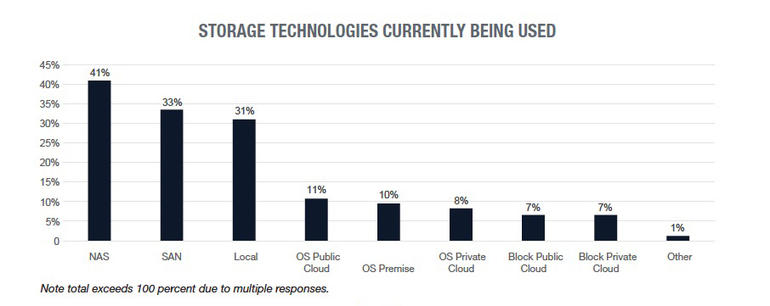Storage System Evolution

Hi buddies! How’s it going? Today I will talk about Datacenter Storage Techniques.
Storage Systems are at the core of any data center, whether it be small, medium, large, cloud or non-cloud. A correct Storage system implemented can help a business thrive but if it’s handled poorly, they can cripple datacentre properties and put companies at risk.
Today’s infrastructure is being tasked with supporting many more applications, users and workloads so the storage infrastructure of a data center must be adaptable and capable of intelligent data management. A lot of vendors have evolved their solutions to give more support to these new IT and business demands.
- Solid State Drives and Flash. SSD and flash are still somewhat pricey and are really designed to play a specific role within storage. Organizations look to offload heavy cycles from their primary spinning disks with load flash or SSD.
- Unified Computing Systems. Efficiency is the key of any data center environament so many vendors have been integratin storage solutions into a unified Communications System like FlexPod or vBlock. The idea, is the Integration of storage into Systems which are capable of supporting massive amounts of resources. In working with storage, this type of deployment can create an easier to manage environment which is much more ready for business demands and growth.
- Replication. Most of time of datacenters is based on the distribution and replication. New storage systems must be capable of not only managing data at the primary site.Setting the right replication infrastructure will mean managing bandwidth, scheduling and what data is actually pushed out. Storage can be a powerful tool for both cloud computing and business continuity. The key is understanding the value of your data and identifying where that data fits in with your organization.
- Multi-tenancy With one controller, split up services to allow others access to a locked down instance of storage. Now, instead of having to purchase controllers and arrays for multiple corporate departments, storage administrators can split up the one and control the entire environment. To the sub-admin, it looks like they have their own physical unit. However, to the primary administrator, they are still tasked with management of just one controller. This type of storage deployment can help with data control, security and resource management.
- Data deduplication. Data deduplication can help manage data that sits on the storage array as well as information being used for other Systems. If a change was made to the file, the system is smart enough to log those changes and create secondary pointers to a new file. Having direct visibility into the data infrastructure not only controls storage-sprawl, but it also helps continuously maintain a health storage environment.
A few time ago a survey about which storage tecnologies are active in their datacenter was made to 242 respondents.
So NAS and SAN protocols represent 70 percent of storage tecnologies in use. Companies are starting to use Cloud tecnologies for their storage needs.
But now let’s talk about NAS and SAN.
NAS provides both storage and a file System, SAN provides only block-based storage and leaves file System concerns on the “client”side.
SAN protocols include Fibre Channel, iSCSI, ATA over Ethernet and HyperSCSI.
NAS appear to the client as a file server whereas a disk available through a SAN still appears to the client OS as a disk.
Despite their difference, SAN and NAS not mutually exclusive, and may be combined as a SAN-NAS hybrid.
In our project, we work with Oracle Servers so we look for the solutions that Oracle propose.
In terms of NAS storage, we have the ZFS Storage Appliance which is ideal for cloud and virtualization environments. It has:
- Co-engineered with Oracle Database: Hybrid Columnar Compression (HCC) & Intelligent Storage Protocol
- Storage Optimization with Oracle Enterprise Manager
- Hybrid Columnar Compression
- Oracle Intelligent Storage Protocol for Oracle Database 12c
- ADO/Heat Map with HCC in Oracle Database 12c
- Remote Replication with Intelligent Compression
On the other hand, in terms of SAN we have the Oracle FS1 Flash Storage System which scales to petabytes of all-flash capacity while delivering a multitude of innovations designed to take flash technology to new extremes. Users of Oracle Applications including Oracle PeopleSoft, Oracle E-Business Suite and more can now benefit from one-click application storage provisioning which simplifies deployment and automates complex manual tuning and administration. Unlike most competitors’ all-flash arrays, the Oracle FS1 provides enterprises the option to exploit the economics of hard disk without impacting the predictable performance expected from an all-flash array.

Add new comment